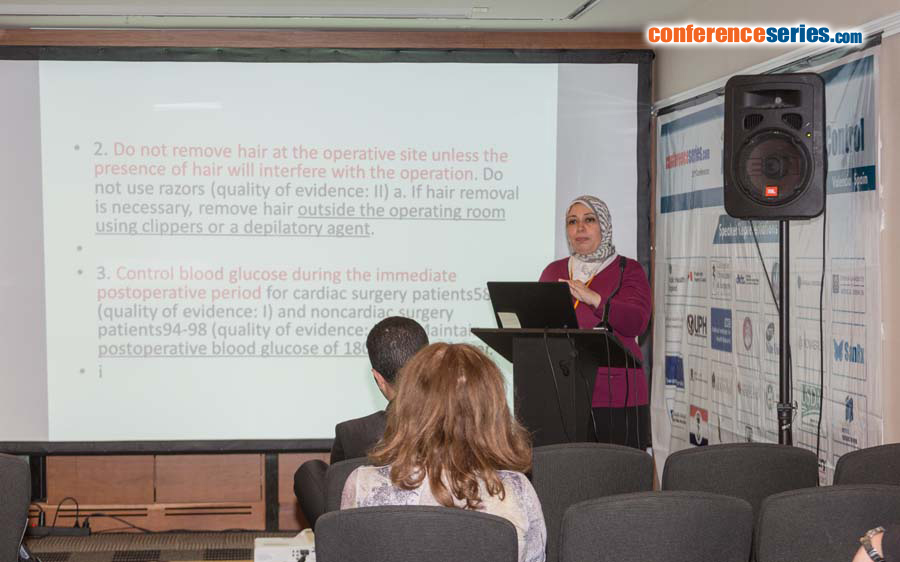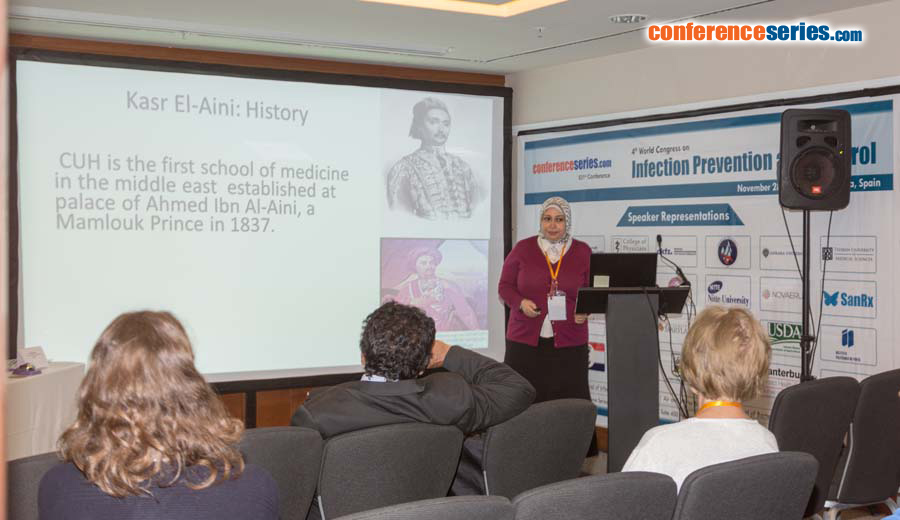
Jehan Ali El Kholy, Mervat Gaber and Dina Mostafa
Cairo University Hospital, Egypt
Title: Healthcare-associated infections HAI in Cairo University Hospitals: A success story of surveillance in a resource-limited country
Biography
Biography: Jehan Ali El Kholy, Mervat Gaber and Dina Mostafa
Abstract
Background & Aim: Healthcare-associated infections are the most frequent adverse event in healthcare delivery worldwide. Limited data are available from low and middle-income countries. Most countries lack surveillance systems for health care-associated infections. We aimed to describe the results of the surveillance system we followed from 1 September 2014 till 31 March 2016 in Cairo University Hospitals (CHU) a 5200 bed-tertiary hospital.
Methods: Standardized surveillance system was conducted in all intensive care units (ICU) of CUH from 1 September 2014 to 31 March 2016. Surveillance was active prospective and focused on ICU patients; a vulnerable patient population at increased risk of HAI and AMR due to severity of illness, high exposure to invasive procedures and devices and high use of broad spectrum antibiotics. HAI definitions used were the same 2008 NHSN case definitions. The involvement and training of IC Team, data entry person, Microbiology laboratory performing full bacterial identification, antimicrobial susceptibility testing and culturing all types of specimens, IPC link nurses in ICUs to monitor and report infections to the IPC team were essential. Data were collected with surveillance officers and analyzed. Device-days were used to calculate incidence of device-associated infections and patient-days to calculate incidence of HAIs that were not device-related. Antimicrobial susceptibility testing was performed using CLSI guidelines.
Results: 38 ICUs including medical, surgical, stroke units, cardiac, cardio-surgical, obstetric, pediatric, neonatal and burn units contributed to 94877 patient-days and 1272 HAIs. Of these 224 (18%) are ICU acquired, 111 (9%) Ward acquired, 808 (63%) Infections present on ICU admission and 129 (10%) SSI. Of the infections BSI represented 43% (with 70% CLABSI), UTI represented 27% (with 97% CAUTI) and pneumonia represented 39% (with VAP 80%). The incidence of HAI were 2.4/1000 patient-days, VAP was 2.5/1000 ventilator days, CLABSI was 1.2/1000 central line days and CAUTI was 1.2/1000 urinary catheter days. Culture of microorganisms showed that Gram negative pathogens constituted 71.4% of the total pathogens, mainly Klebsiella spp., constituted (28.6%), Acinetobacter spp., (16.6%) and Pseudomonas spp., (9.4%). Most of Acinetobacter and E. coli isolates were multi-drug resistant; 83.7% and 82.7%, respectively.
Conclusion: Implementing a standardized surveillance system in a resource-limited country is possible. Having a continuous and sustainable surveillance system is a success. Surveillance is fundamental to have benchmark of infections, to plan for prevention strategies, to record the antimicrobial resistance pattern and to plan for an antimicrobial stewardship program.




